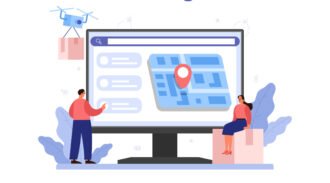Benefits of Building An Enterprise Learning Management Cloud
Every business needs to train its employees properly. To enhance productivity and quality, companies must adapt to changing times and use technology to help keep their teams up to speed. Traditional learning methods are rapidly making way for blended and online learning concepts. Intelligent delivery of concepts can help teams thrive. These learning platforms are usually part of a more extensive enterprise learning management system, often in the cloud.
Millions worldwide use an Enterprise Learning Management (ELM) system for many aspects of their workplace. Whether enhancing performance, improving efficiency, or helping employees learn new products, an ELM is integral to any modern corporation. Building a powerful ELM cloud should be a top priority.
Here are five benefits doing so can offer your company
Learning Management
Learning management is the core concept of any well-built ELM. Learning management includes the methods used to help employees learn new skills, ideas, or information. It also covers all the tools companies need to monitor progress, facilitate collaboration, and measure success (completion rates, engagement, etc.) for every learner in the system. Any company’s ELM cloud should have a robust learning management system built into it—particularly if you want to see results.
Adding the correct elements to your LMS is also essential. Your ELM should include communication, gamification, qualitative assessment, and a strong analytics tool so it’s easier to track progress and make improvements over time. With the right ELM, learning can even be monetized, scaled, and distributed across different cohorts, teams, and companies to maximize the ROI/Value of the learning system across your entire cloud/company.
Content Creation
Creating and designing content for a learning management system can be challenging and sometimes painful. Ensure things are done right during content creation to provide adequate learning opportunities and interaction. A robust ELM should allow users to design learning experiences that adapt to any learner’s level, be consumer-grade, and cater to remote options. Regardless of what big businesses say about the matter, remote work is here to stay, so adapting your learning solution to remote workers is critical to providing them with high-quality content.
Authoring and design are two critical elements that should factor into content creation. A central library should also contain relevant content for learners across the system. Design your content around collaboration and localization, and consider different versions of the software people might be using. By authoring your content and tailoring it to your teams, you can provide your learners with the best possible training experience.
Personalization
Personalization within an enterprise learning system and ELM is critical. You need to be able to provide an experience that’s tailored for each learner. You can use learning analytics and data from your training environment. For partners, resellers, and extended enterprise clients, you need customized/personalized learning at scale.
Seek a high-quality ELM solution incorporating licensing, segmentation, branding, reporting, and syndication to ensure you can personalize as much content for your teams as possible. Personalization is the key to any learning success model. If you can get your learners to engage with the system meaningfully, their success and completion rates should improve, ultimately improving your operations.
Scalability
In any large corporation, scalability—the ability to easily alter, shape, and change your programs to adapt to more significant (or smaller) numbers—is vital to any successful learning program. If you can’t scale your learning programs to cover a more diverse range of employees, they might not be suited to your needs. To scale appropriately, your scalable enterprise learning platform should be able to send personalized content to the right people at the right time. Learning can be a mix of in-person, online, video, and blended. This makes it easier to ensure everyone gets the most out of the learning system and provides tremendous value to customers using these platforms.
Analytics and Integration
It’s a common theme, but analytics and integration are two critical components of your ELM. Analytics allows you to track the effectiveness of your learning programs, while integration can help your LMS communicate with other systems. For example, suppose you want to use your ELM to create and track certification programs. In that case, you’ll need integration with a system like Salesforce or Workday (two commonly used enterprise management systems.
A good system can also easily integrate with your existing customer relationship management (CRM) tool so that the learning team can be notified when someone completes a course, takes an assessment, or receives a certification. These are two critical components of any ELM cloud and shouldn’t be overlooked when choosing a company to handle your enterprise learning needs.


















